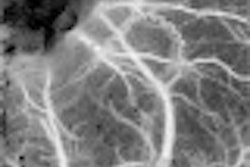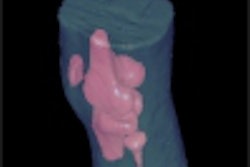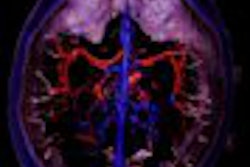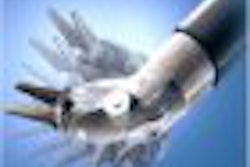The European 3-D imaging market continues to grow as the technology proves its advantages over 2-D. The expanding range of 3-D clinical applications will prove to be a major revenue generator for the European medical imaging industry in the future.
With a market size of $386 million (U.S.) in 2001, the European 3-D market is expected to generate up to $571 million by 2005, with varying degrees of impact across national and product markets. At this stage, the 3-D sector's greatest strength is the large untapped market for the technology, such as at new healthcare institutions that will be set up over the next few years, and in facilities that are planning to implement technology upgrades.
Uncontrollable factors such as reimbursement and budgetary issues are rapidly changing the face of the market. Reorganization in most European healthcare systems has led to redefinition of reimbursement regulations, forcing hospitals and other healthcare institutions to optimize resources and increase efficiency. As 3-D imaging is known to be efficient, quick, and accurate, this technology fits well with market requirements for medical equipment that enhance efficiency.
Among other issues, acceptance and awareness of technology play a major role in stimulating demand for 3-D imaging. The fortunes of the market hinge on end-user knowledge of the technology, as well as vendors' ability to cater to complex, changing needs.
A clear understanding of customer demands is becoming the fundamental factor for competitive survival, strategic planning, and development of successful marketing plans. An increase in R&D investments is already being noticed in the market.
CT leads the way
Accounting for close to 45% of the total sales of 3-D imaging workstations and software, CT is the biggest revenue center for 3-D imaging in Europe. Following CT is MRI, which has not shown dramatic growth like CT's, but may achieve it within the next few years. CT enjoys immense popularity due to a wide range of applications and proven clinical benefits.
Three-dimensional ultrasound is still a rarity, although it is quite possible that 3-D applications within ultrasound systems will become a regular feature when the market matures further. With a few exceptions, separate 3-D applications in ultrasound are perceived to be overpriced and of limited clinical value.
Germany is the biggest national market for 3-D imaging in Europe, producing 22% of revenue in 2001. Italy and Scandinavia are the second and third biggest markets in terms of revenue generation. However, this trend will likely change significantly over the forecast period; the Scandinavian region is expected to lose its position to France and the U.K. due to market saturation.
Germany and Italy will continue to hold onto their market positions, although the growth rate will be higher in Germany due to its size. Italy, France, and the U.K. will generate almost equal contributions to overall market revenue.
A possible revenue driver in the U.K. is the potential privatization of imaging operations. This will change the structure of vendor marketing activities, as a single company will be responsible for the entire imaging and image management operations within a hospital or imaging center in terms of staff, management, and maintenance.
Benelux is a potential market, but its small size will hinder growth. Spain, due to economic reasons, will continue to be the lowest-value market. In terms of growth by modality, the trends will remain similar, except that the U.K. will show tremendous growth in 3-D in ultrasound and nuclear medicine, helping it become the second biggest market behind Germany.
The future
With an intensified competitive environment, the European 3-D imaging market is slowly but steadily moving towards market maturity by 2005. This will bring about greater price controls due to reductions in price competition and market erosion.
With increasing profitability, new product development and innovation will get a boost. Competitive factors are likely to spark a shift to more customer-oriented marketing approaches, with tremendous importance placed on relationships and customization.
All of these factors will make the 3-D market an interesting one to monitor over the next three to four years. A large number of mergers and acquisitions will continue to take place, which will change the competitive landscape in the years ahead.
With increasing awareness of its capabilities and benefits among potential users, 3-D imaging is sure to become an essential component in imaging systems. Therefore, constant market evaluation is becoming critical in the development of marketing and strategic activities for consolidation within the marketplace.
By Sumit SharmaAuntMinnie.com contributing writer
May 30, 2002
Sumit Sharma is a research analyst with Frost & Sullivan, a San Jose, CA-based market consulting and training firm. The information in this article is included in a recently published Frost & Sullivan report on the European 3-D imaging market. For more information, visit healthcare.frost.com.
Related Reading
The European PACS market: The best is yet to come, March 21, 2002
European CT community works to cut pediatric radiation dose, April 2, 2002
Digital x-ray market to hit $356 million by 2007, February 5, 2002
Copyright © 2002 AuntMinnie.com



















